
Apprenticeship as a driver: Lena Evers transports cool vehicles throughout Germany
Story
Lena is training to become a truck driver. She really enjoys working in the Actros, but it's not just all about driving.
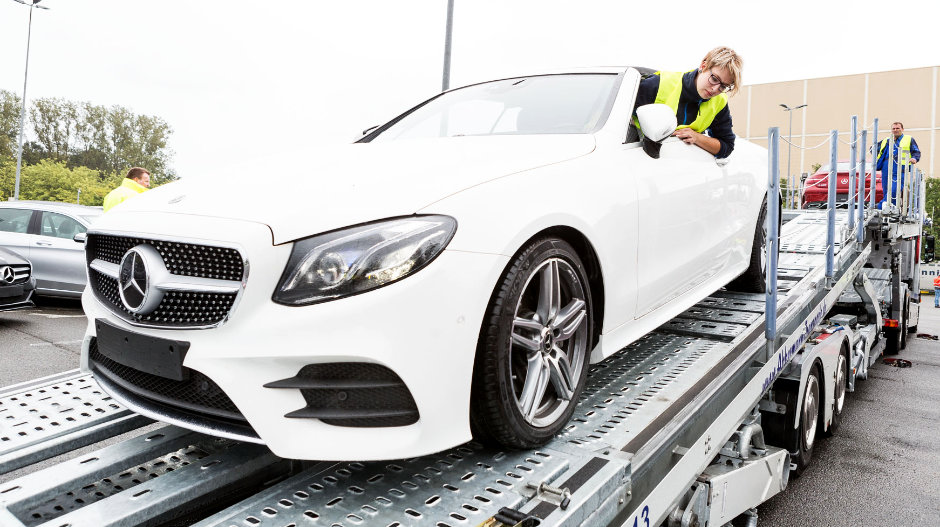
Lena drives the valuable freight on to the trailer.
The metal of the trailer rattles. Lena Evers has no time to lose; eight Mercedes-Benz coupés have to be loaded onto the transporter quickly. Her Actros is standing in a parking area at the Daimler factory in Bremen. The 21-year-old leans with her torso out of the side window as she steers up the ramp of the body. "This is the best way to see how much room I still have," says Lena.
Once in position at the top, she closes the vehicle door, walks down
the ramp and gets into the next coupé. Now backwards. Even when time
is pressing: care is called for. No wrong driving manoeuvres with the
valuable freight. "Otherwise, I would owe some explanations to my
boss and our customers," says Lena as she tightens the retaining
strap and brushes a blond strand of hair to the side.
This article contains additional material (videos, images and reports etc.) for registered RoadStars members. In order to experience the article to the full, you need to log in with your RoadStars account or register for one free of charge.
Become a RoadStar and gain access to exclusive content and campaigns!
Login for RoadStars members
Not yet a member? Join RoadStars now
Obtain exclusive access to exciting events and activities which only RoadStars can offer.
Join RoadStarsDriving is not everything.
Lena is an apprentice truck driver at Akkermann Transporte GmbH – and the only woman out of 60 drivers at the East Frisian company. In her vocational training school also she is somewhat the exception. "I do meet female colleagues from time to time on the way but of course: we are the minority."
She slips on her work gloves. "Driving is by no means all that
needs to be done." 24 retaining straps have to be securely
fastened, 34 wheel chocks positioned. Lena pulls up her sleeves.
"When I'm finished I certainly know I've done something,"
she says with a smile, patting her tattooed forearm.
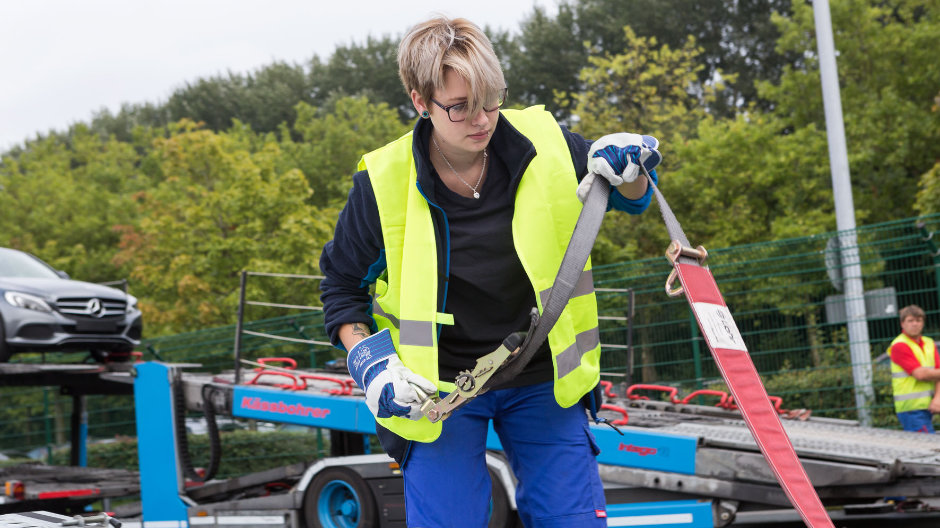
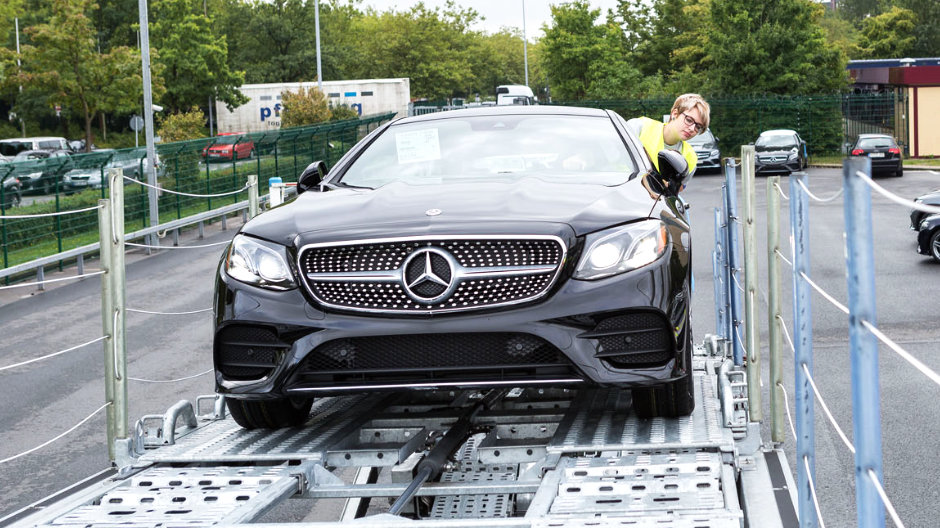

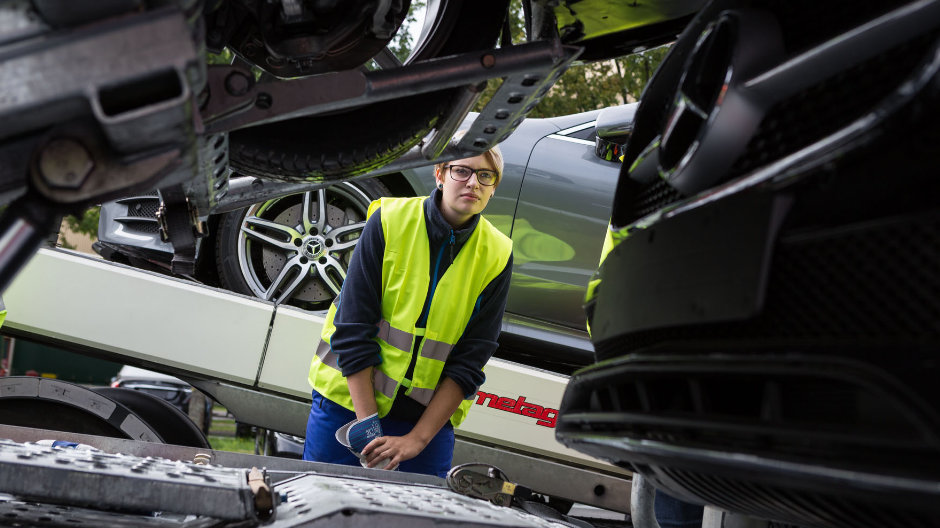
There is a demand for people who use their brains.
Trips for the Mercedes-Benz factory are the daily business for Akkermann Transporte. But today there is something unusual on the itinerary: the test loading of a new vehicle model. Lena and her colleagues from the transport company as well as staff from the body manufacturer test the loading of a new E-Class Coupé on various vehicles. Markus Reiter checks the quality for Daimler AG, putting the different transporters through their paces. Heights, weights, axle loads: finally, the drivers, controllers and the logistics experts from Mercedes-Benz know how many units of the new vehicle models, in which way and with which transporter can leave the factory.
Markus Reiter has also already worked with Lena: "She handles our vehicles with care and she thinks along with us. That is the right attitude: using your brain is essential for car transporters".
Lena now drives a coupé onto the lower level of the transporter. She's not answering questions now, she is concentrating. "I always find it amusing when someone looks into the cab and then is completely dumbfounded that I – a woman – am sitting inside," she says as she walks to collect the next vehicle. Even now when loading, someone looks and then takes a second look.
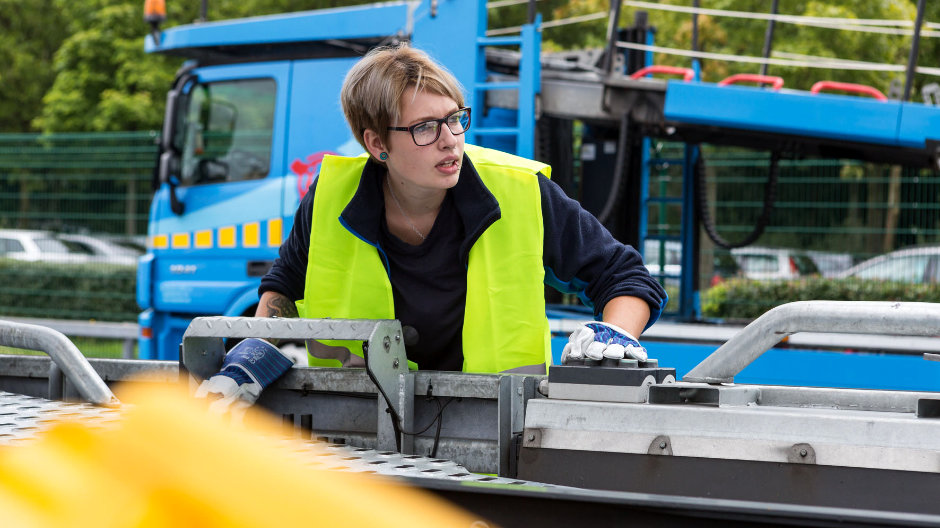
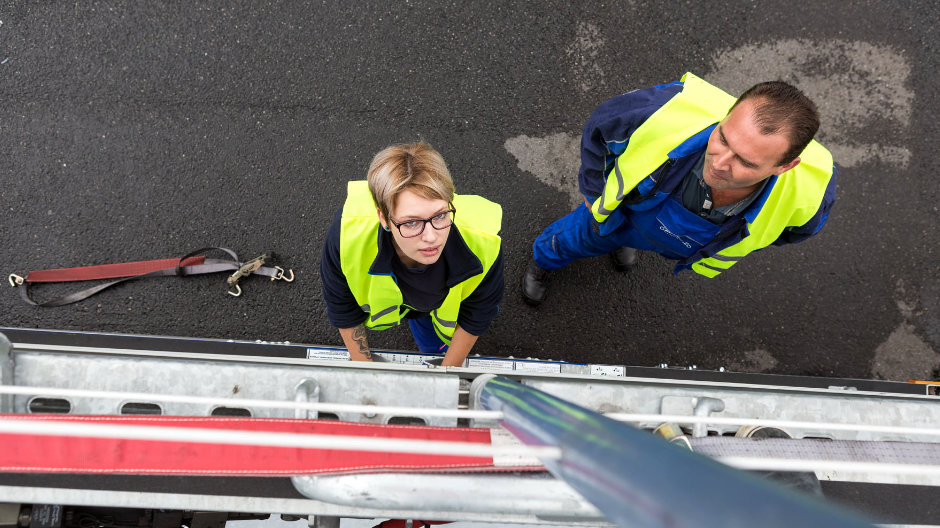
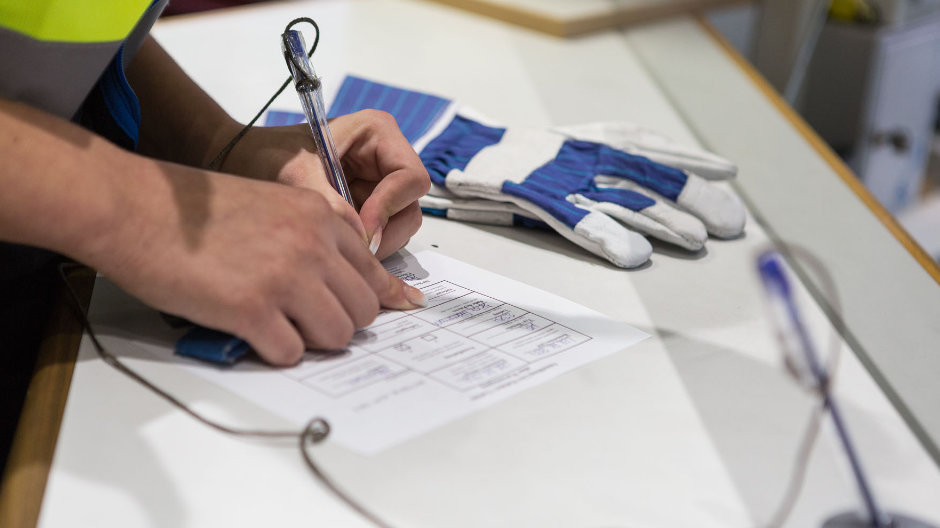
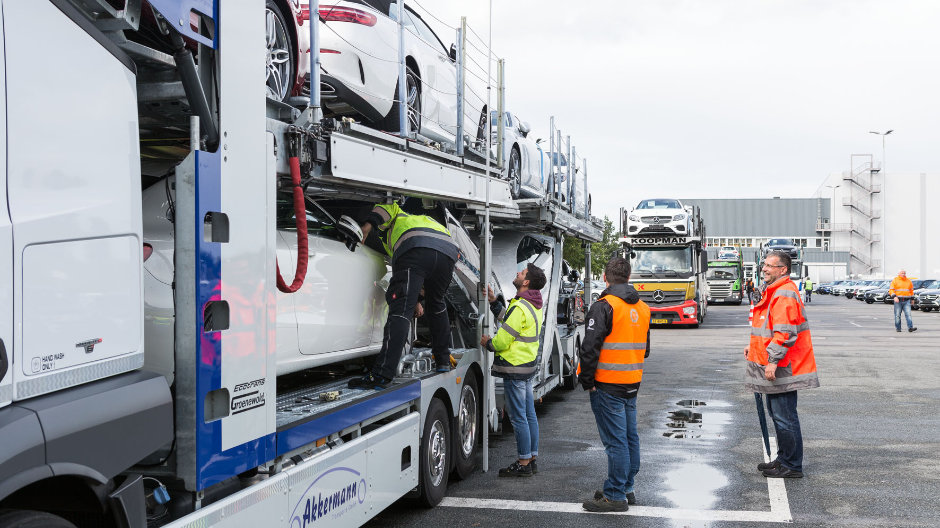
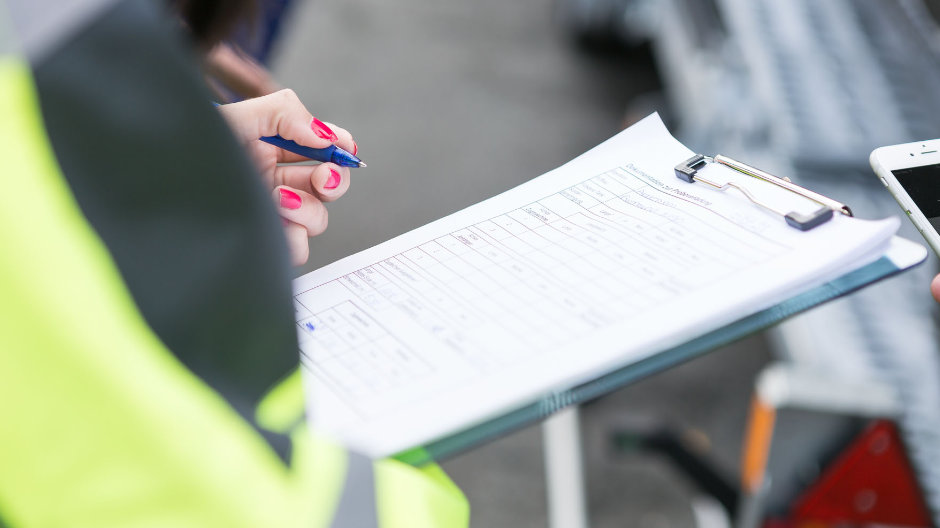
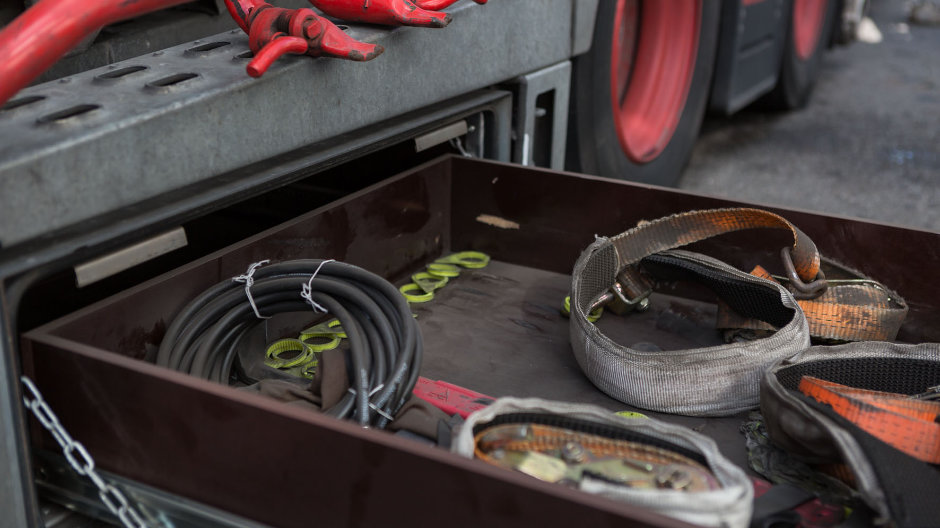
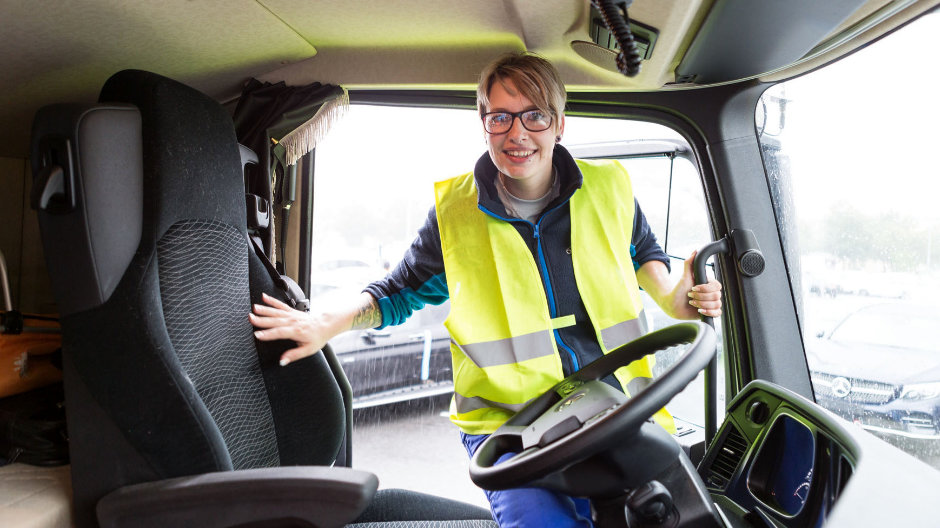
Male or female driver – it makes no difference.
"Whether the driver is male or female, it makes no difference to me," says Klaus Akkermann, Lena's boss. "We need good people and up to now Lena has carried out her job with us extremely well." It is more and more common that companies train their own drivers. The apprenticeship takes three years to complete and the driving licence can be acquired at 18. The ones who then pass the medical and psychological examinations can get started. At least within Germany.
Akkermann even allows the new recruits to drive for a while for other companies during the apprenticeship. The haulier says: "In this way they can become familiar with the various aspects of the job. They might not be in long-distance haulage for the whole of their working lives."
Lena has been training as a truck driver for one year now. She has had her HGV licence for 6 months. For Lena, long-distance haulage is just her thing. She is now doing trips within Germany on her own. Always with valuable freight, the whole week. Lena: "I got used to it quickly. And besides, I come home on Fridays". She enjoys her weekends with her boyfriend and the three cats. She drives for three weeks and then she has a one-week block of instruction at the vocational training school.
And how is it for a woman alone at the rest areas? "Naturally I feel happier when I am not parked in a dark corner at night," says Lena. However, that isn't always easy. After all, she doesn't fit in every parking space with her transporter that's over 20 metres long. "If I'm not yet familiar with an area, I call a colleague or two. They then give me tips about where I can park."
Markus Reiter, who is checking the transport, positions the levelling board on the Akkermann transporter. 3.98 metres: low enough. With a colleague he ticks through all the items on the list; the other measurements and values are also OK. When the mission has been successfully completed, the coupés have to be removed from the trailer again.
"But we don't want to drive away from here empty," says
Lena. Eight new cars are waiting for transport to the distribution
centre. Lena is already rolling up her sleeves.
Photos: Kristian Barthen




Comment
Please log in to post a comment.
7 comments
Fetten Daumen hoch für aller Truckerinnen 👍🏼
Fetten Daumen hoch für aller Truckerinnen 👍🏼
Viel Kraft und Energie auf deinem Ausbildungsweg und weiterhin viel Freude mit dem Beruf 👍👍👍
KG aus München
Viel Kraft und Energie auf deinem Ausbildungsweg und weiterhin viel Freude mit dem Beruf 👍👍👍
KG aus München